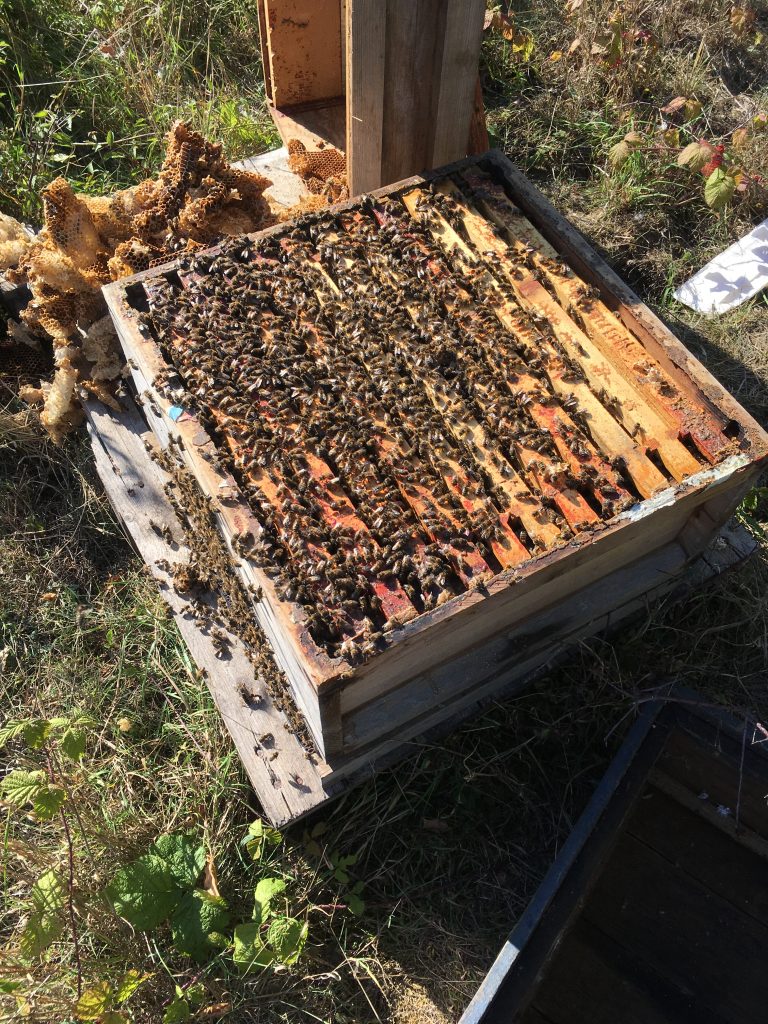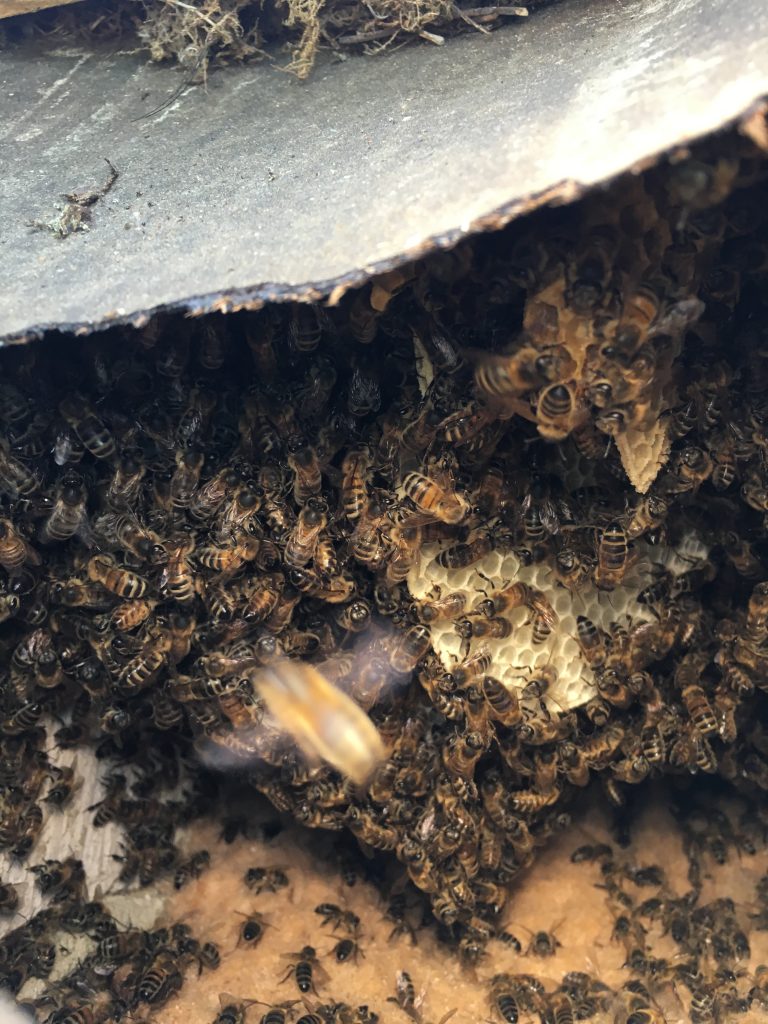2025 – Sadly, we are unlikely to be able to help with bee removal this year unless you are in Hempnall or Topcroft. We expect to be back to a normal service in 2026.
We will never give you a hard-sell like some of our competitors and we believe that leaving the bees where they are is often a perfectly acceptable solution in many locations. If, however, the bees in your property are causing you real problems, we are more than happy to help. We do not have a massive advertising budget, fancy website or “virtual” (Fake) office address/es to game the search engines, we don’t have fancy cars or trucks and as such, we won’t charge you more than the job is worth as we don’t have to pay for these things. I’ve recently heard some real horror stories of what people are quoted for this type of work – please do talk to us if you have been quoted astronomical figures for removing bees from your property as we will never sting you on price.
There are three main types of bee removal that we undertake. In all cases, the bees are re-hived, fed, treated for varroa mites and monitored and treated for notifiable diseases before being given a home in one of Daniel’s apiaries after a six week quarantine. If notifiable diseases are found, DEFRA is notified and the bees are treated under the supervision of the regional bee inspector. They sometimes need to be re-queened from known stock to cure aggressive tendencies or genetic predisposition to disease.
Bee Swarm Removal

If the bees have not yet built combs and have not entered a building or other structure, they can easily be removed by encouraging them into a basket. This is the easiest type of removal.
Trap Out Bee Removal
Trap out is the least destructive method to property and can be used where it is impossible to access the combs without significant damage to the building or in listed or heritage buildings where it is imperative to preserve the building.

The trap out method involves a one-way bee gate to allow flying bees out of the building and into a trap box, in which the bees are encouraged to raise a new queen from a donor egg. After all of the bees have left the building and the original queen has died, the bees can be allowed to forage any leftover honey from inside the building and they do get every last drop.
Trapping out requires multiple visits and can take a long time.
Vacuum Bee Removal
This bee vacuum method is the fastest and requires access to the combs. Often, repairs are already needed to your building, otherwise the bees would not have got in in the first place. We remove tiles or cladding and sometimes chimney haunching to gain access to the combs. We either work with your own builder or roofer or arrange one for you so that necessary repairs can be made following our visit.

The bees are then gently and safely removed to a special hive using a custom-built bee vacuum.
Prices
Please contact us to get a rough idea of what it might cost to remove your honeybees as every bee removal job is different.
We give great advice by telephone or email and really appreciate if you can provide us with photos by email, text or Whatsapp so we can better understand your unique situation.
We are happy to provide a site visit and survey to give you an accurate quotation and can almost always do this for £100 (depending on location). We will use borescope cameras and ingenuity to find out where the nest is and how big a job it will be to remove it.
